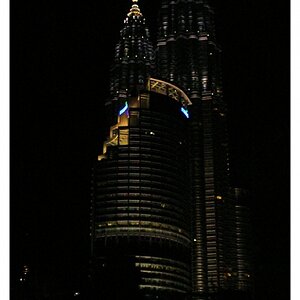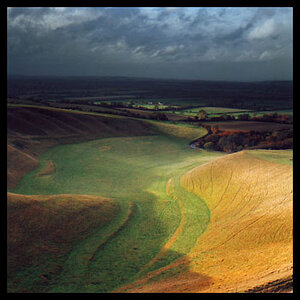A
astrostu
Guest
Adding a Motorized Equatorial Mount
Note: At this point in the guide, you should be using an SLR … unless your point-and-shoot has a bulb setting and a wonderful range of lens lengths.
Required Equipment: SLR Camera. Motorized mount that tracks the sky.
What Can be Photographed: Anything.
Major Limiting Factors: Sky brightness, detector noise, aperture, focal length, and atmospheric turbulence.
----------
Limiting Factors at this Point
This is where things really get interesting and you're more limited by sky noise, detector noise, the length of your lens, the size of your aperture, and atmospheric turbulence (seeing). As such, I'm going to briefly talk about why each of these is a limitation.
But first, why they are a limitation: By using a motorized mount, you can now compensate for Earth's rotation and no longer see the trails of objects as Earth rotates under them. Consequently, you can now take a (if you wanted) 30-minute exposure of a star and it would still look like a point-source. That is why you are no longer limited by how stationary you can get an object and more by other aspects of your viewing location and equipment … which are:
Sky glow - No matter where you are, the sky has some finite brightness, and light from it will be recorded by your camera sensor. This is greatly reduced if you are in a dark location, such as the middle of a desert, the top of a mountain, etc., as opposed to - say - the middle of New York City. To give you some idea of this (and refer to "magnitude" in the Terminology section if you don't know what that is), the faintest star that the human eye can see is around magnitude 6. That's in a dark sky site. When I was in New York City, I had trouble finding Sirius, the brightest star in the night sky, which is around magnitude -2. Granted, taking a long exposure will help you to see fainter objects, but keep in mind there is a fundamental limit to how faint you can go depending upon your location.
Detector Noise - The other limit to how faint you can go is noise in your detector. Leave the lens cap on, and take a 5-minute exposure at your lowest ISO (should be 50 or 100 as of 2007 when I wrote this). I'll wait. Alright, now look at that image, and it should be perfectly black. However, it isn't. It might display rows and/or column streaks, cross-hatching, globules of brightness, bright pixels, etc. If you can't see any of these, then use any Auto Adjust feature in whatever software you use (e.g., Auto Levels in PhotoShop) to bring these out. This is caused by imperfections in the detector, the physical temperature of the camera, and other things. Now do the same thing, but up the ISO to something like 800. See the difference? This is why I say that for astronomy, buy a tripod and use the lowest ISO you can. The longer the exposure, the more noise you get, and the higher the ISO, you get even more noise recorded.
If you have software that can do image arithmetic, then you can pretty much get rid of this effect. What you'll want to do is to take an image with the lens cap on using the same exposure length as you do for the images of objects you're photographing. Then you can simply subtract this image from the object image (this is called "dark-subtraction"), since this noise is merely additive. (Note that I talk more about this later in the guide in the "Advanced Techniques for Better Images" section.)
Aperture - Assuming at this point you're going for deep-sky objects (pretty much anything but the Moon, though planets are sometimes not considered deep-sky objects), then you want the largest aperture you can get your hands on. Otherwise, you'll need to take much longer exposures. The amount of light that gets through is proportional to the square of the f-number. So, for example, my kit lens goes down to f/3.5. A lens I have added to my equipment list is a 35 mm f/1.4 prime. Squaring the two and dividing shows that to get the same amount of light to come through the lens and onto the detector, I would only need an exposure 16% the length as I would need with the f/3.5 (3.5^2/1.4^2 = 12.25/1.96 = 6.25 -> 1/6.25 = 16%). In astronomy, it's all about aperture -- bigger really is better, and that's why we're always trying to build bigger and bigger telescopes (the Keck telescopes have an aperture of 10 m, which is currently the largest in the world).
Exposure Length - There is no rule of thumb that I can give you for exposure of astronomical objects since it will completely depend upon (1) the object, (2) how dark your observing site is, and (3) your maximum aperture. The best thing to do is to guess-and-check.
Atmospheric Turbulence - The atmosphere moves. That's why we have wind, weather, etc. But, the atmosphere does not move all at once, and it has many different layers that move on their own. This creates turbulence, and due to various optical properties, it causes the positions of various parts of the object you're trying to view to move around. This makes it appear blurry, and it can shift positions slightly between exposures (if viewing a very small object like a planet). There is no way that you can correct for this at this level (look up "Adaptive Optics" if you're interested in how astronomers deal with it). The only thing you can do is to try to minimize it by only photographing during calm weather, having low humidity, or being at high elevations (like on a mountain).
Earthshine Revisited
At this point in the guide, as I said at the beginning of this section, you should be using an SLR. Attach your biggest camera lens and set up your mount. Take an image of the crescent moon for a split second (for me, around 1/20 sec at 1000 mm, f/16) to properly expose the Sun-lit portion of the Moon. Then, take around a 20-second exposure. Then make a nice montage like the one below (though I used a telescope for the Sun-lit sliver, you can just use the same super-duper telephoto):

This is a good point to talk about adding images to get better ones. Going back to the "if you have software that does image arithmetic," you can take several photographs of the same object, take them into the image arithmetic program, and then take the average of all the images. This will help to reduce the effects of the noise in the detector, noise in the sky, and noise that the atmospheric turbulence adds onto the image (it's more for the atmospheric turbulence that we average in astrophotography, more for the noise that we average in astronomy). See the "Averaging Multiple Images" sub-section in the "Advanced Techniques for Better Images" section for more information.
Constellations and Asterisms
Next up are constellations. For these, you'll want a standard lens since constellations are generally around 30° across on the sky.
An effect you may want to add is a blurring filter (either physical or in post-processing). This helps to make the stars seem to "glow" more and bring out their color. An example of the blurring is in the image of Orion, below:

Another piece of equipment you may want for constellations is a cross-screen filter to produce diffraction spikes on the stars (what some people call "twinkling" though "twinkling" is caused by something completely different). In real science images, diffraction spikes are bad (they are caused by the support "spider" that holds secondary mirrors in place) because we want the stars to be circles and not have their light spread out all over the place. However, in "pretty picture" astronomy, diffraction spikes generally make the image look more interesting and they help to bring out the color of the stars.
An example of adding the diffraction spikes is in this image of the constellation Böotes and Corona Borealis (the bright orange star is Antares):

Other than those suggestions, the best advice for constellations are to expose as long as you can without getting too much sky noise, use the largest aperture you can, and take several images and average them (this is also sometimes called "stacking"). You may also want to take a few shorter exposures to properly expose the brightest parts of the constellation, and more longer exposures to then get the fainter parts. After all, stars that you'll be able to see range anywhere from -2 to +25 magnitude, or over a factor of 63 billion in brightness.
Unfortunately, there is another effect that will come into play at this point that I have not yet mentioned, and there is no easy way to get rid of it: Vignetting. Vignetting is when the corners of the field appear darker than the center. The degree of vignetting is heavily dependent upon the lens. One way to get around the vignetting is to simply mask out everything but a circle in the center of your image in post-processing. However, that can be very unsatisfying. There are several advanced techniques that can be used to remove vignetting; for more information, see the "Dealing with Vignetting" sub-section in the "Advanced Techniques for Better Images" section.


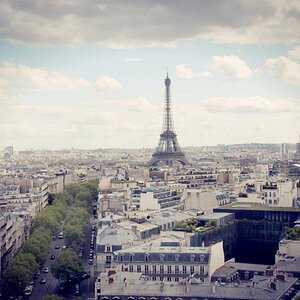

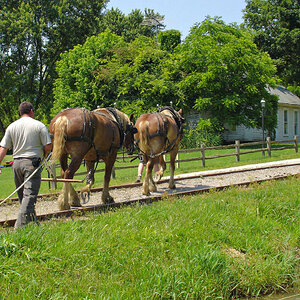
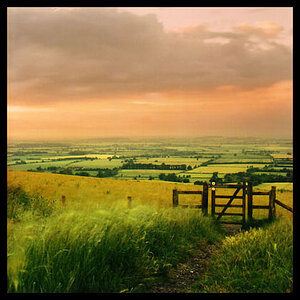
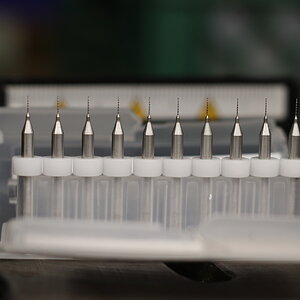
![[No title]](/data/xfmg/thumbnail/41/41756-e54235f9fba04c8380cd991845bb84b1.jpg?1619739881)

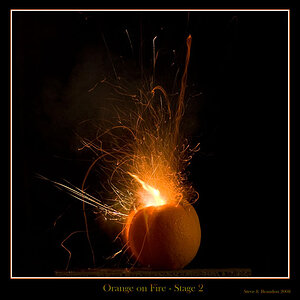
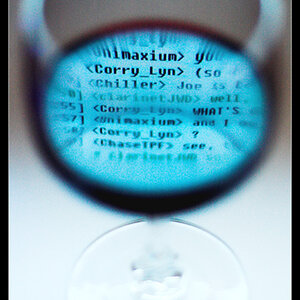
![[No title]](/data/xfmg/thumbnail/36/36303-10b1a386a9a00cf90fb7605d2d2c48c1.jpg?1619737497)
